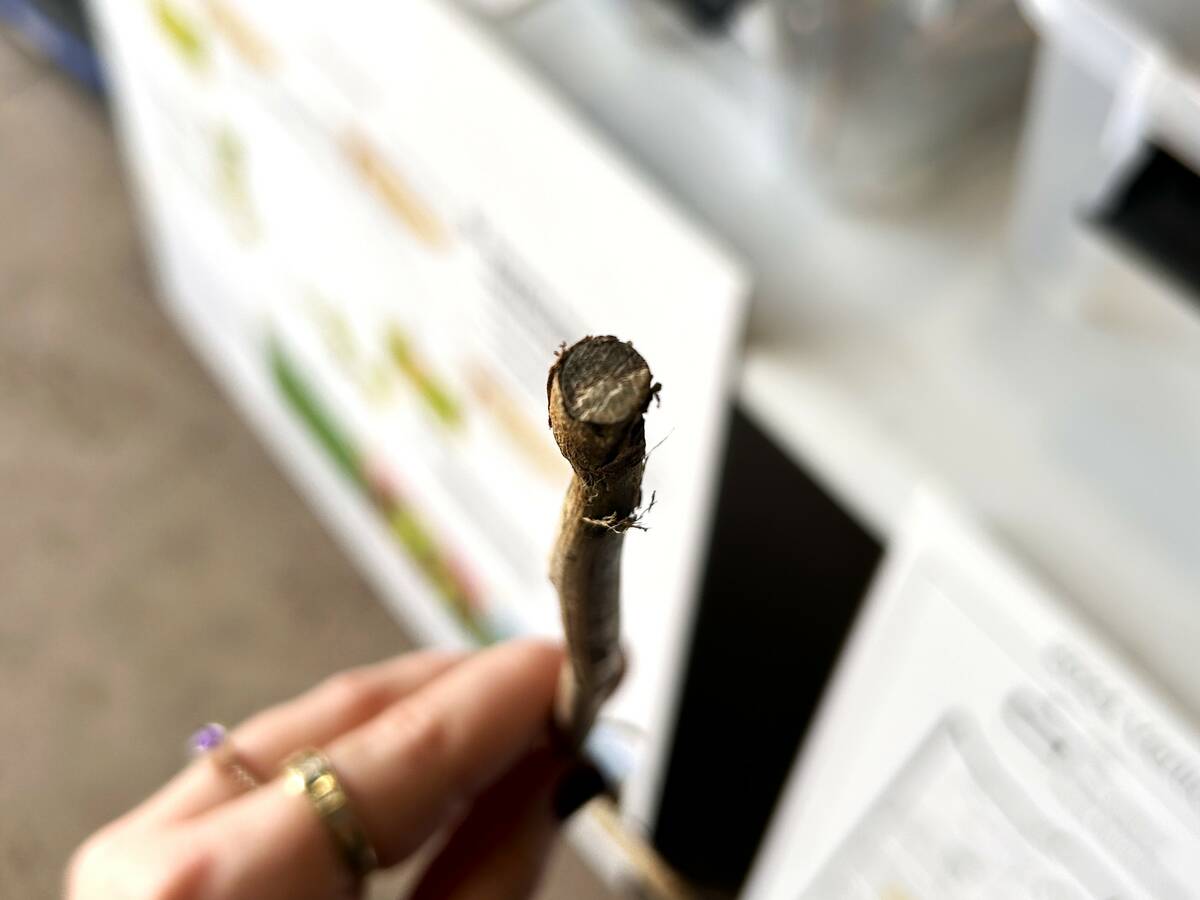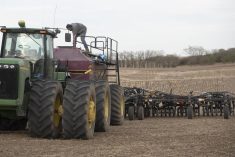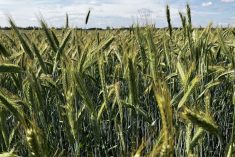The weather isn’t the only thing that’s hot.
Manitoba Agriculture is warning canola producers to avoid banding fertilizer too close to the seed row as continuing dry conditions raise the risk of seed burn.
“Adjust your seeding rate based on your seed size and your fertilizer placement strategy,” provincial oilseeds specialist Dane Froese advised during a weekly Crop Talk webinar May 16. “Get those nitrogen and sulphur fertilizers out of the seed row. That’s going to be a key component of making sure you have successful canola stand establishment. I’ve already seen it on cereals that are coming up. There is a little bit of seed burn based on the phosphate and potash in some instances where the salt effect is burning that seed.”
Read Also

Manitoba canola embattled by verticillium
Verticillium stripe pressure has been growing in Manitoba, and canola farmers still have precious few tools to protect their crop from the disease.
Froese warned farmers to drop their seed-placed phosphorus rates and consider in season nitrogen application, as the province remains gasping for rainfall. Urea-inhibitors like Agrotain may also find a place in fertilizer management plans this year, he added.
Agricultural Manitoba saw its first rainfall in weeks May 15, although amounts stayed less than a tenth of an inch, according to community precipitation monitor CoCoRaHS.
Lionel Kaskiw, Manitoba Agriculture farm production specialist, noted that wind made amounts difficult to measure.
The province’s dry spell has been making headlines with a long string of burning bans across the province. Brandon has had only one millimetre of rain since the start of May, according to Environment Canada, while Winnipeg’s last measurable rainfall was April 12.
The dry conditions are leaving farmers to weigh the balance between tilling in their pre-plant broadcast nitrogen, at the risk of drying soil even more, or risk volatilization losses.
Froese says has seen farmers in the Red River Valley broadcast fertilizing ahead of the seeder, but added that the drill may not be enough to work in the product without a harrow pass.
“If it’s nitrogen, particularly,” he said. “If it’s phosphate and potash, not quite so critical, but the reason for that is the nitrogen volatilization. Because it’s warm and dry, as that nitrogen does dissipate with what little moisture there is, the drying wind conditions over the top can turn that nitrogen into gas and off it goes.”
Provincial nutrition specialist John Heard has also called producers to think about their fertilization plan.
Manitoba Agriculture notes that both higher soil temperatures and wind (Brandon reached gusts of 78 kilometres an hour May 15 and the province has seen multiple days with winds over 50 kilometres and hour through May) increase the risk of volatilization.
Kaskiw has also heard concern from farmers banding fertilizers below and to the side of the seed, but in the same trench. Dry conditions are causing the ledge, which ordinarily holds the seed separate, to crumble and put seeds in closer contact to the hot band.
“That’s something where we might be needing to look at how much fertilizer we’re putting down the middle, with that operation,” he said.
It is too late to preemptively build phosphorus levels, although that is exactly what Froese advises to guard against years like this one. Farmers may have to depend on what is already in the soil this year, he said, looking at the risk of seed burn.
“The other strategy is building up your phosphate in fall or in your cereal years where you can put a little more down,” he said.
Manitoba is expecting periods of rain May 17-18, although forecast amounts are unclear.
















